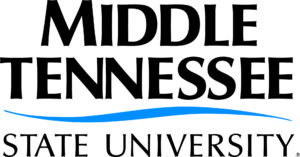This summer brought massive changes to the Media Arts Department’s facilities. Not only did the Animation Lab get a complete revamp, MTSU soft-launched a Media Arts Lab that is specifically designed to encourage students and faculty to create media together.
Interactive Media Professor, Stephanie Dean, has been at the forefront of what she calls her “passion project”, burning both ends of the candle to get the lab up and running. She spent over ten years constructing a similar lab at the University of Umeå in Sweden. Since her arrival to MTSU, she has been “dedicated to creating a collaborative learning space”.
The lab’s intention is to inspire and invite inventiveness among the entire Interdisciplinary Media Arts Department. Media Arts Department Chair, Billy Pittard said, “The most interesting things in the media are where the lines blur. That is one of the main purposes of this lab.”
The space was arranged to create an open, appealing and comfortable environment. The lab’s technology focuses mainly on Virtual Reality (VR), Augmented Reality (AR), game design, motion capture, and Foley (sound effects). Currently, the lab offers access to an HTC Vive and Play Station VR, which are both fully immersive first-person virtual reality systems that permit students to explore the interactive world of VR first hand. Oculus Rift, a separate VR system that incorporates the ‘power of touch’, will soon be added to the lab for a deeper immersive experience.
In addition to the aforementioned Vive, the system’s motion capture trackers will also be available for use. Multiple game design stations for both AR and VR that will include Wacom Cintiq Touch Screen Tablets for production optimization, as well as multiple Apple ARKits that will allow students to create AR experiences for phones and tablets, are in the near future for the lab.
The construction of the Media Arts Lab has already encouraged students and faculty to begin working together on an Augmented Reality game to increase student engagement, and has laid the ground-work for future game design courses within the program. The space creates endless opportunities for the entire interdisciplinary Media Arts program. The lab has a promising future with many more advancements to come.

